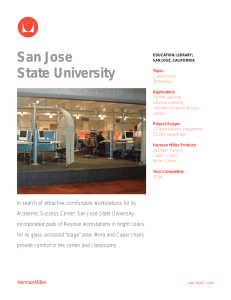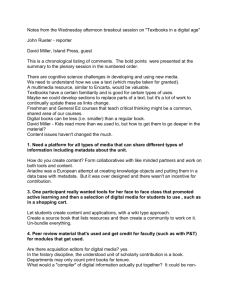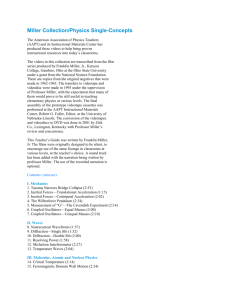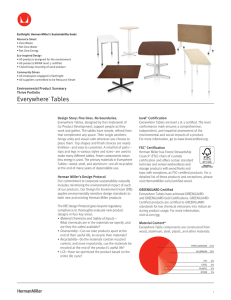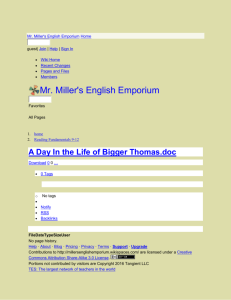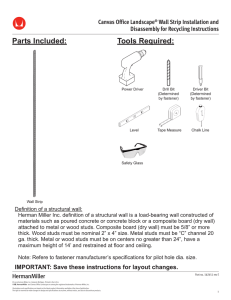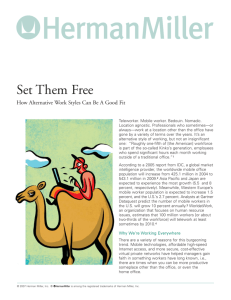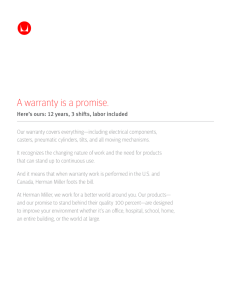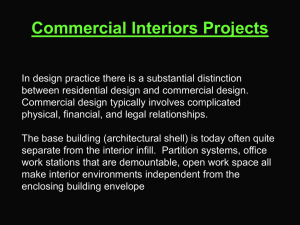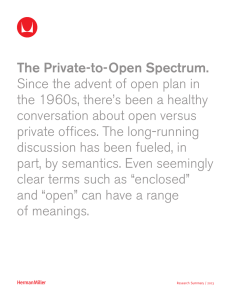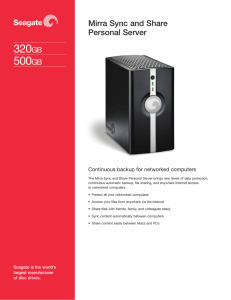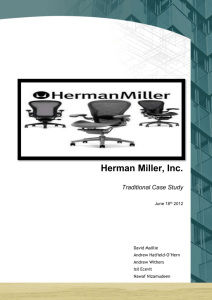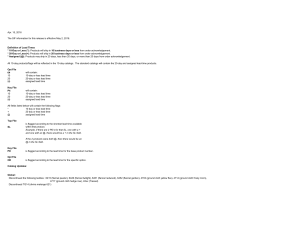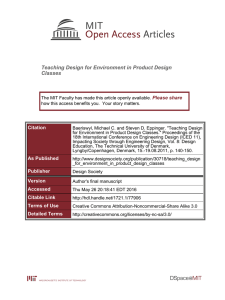A Case Study in Sustainable Product Design
advertisement
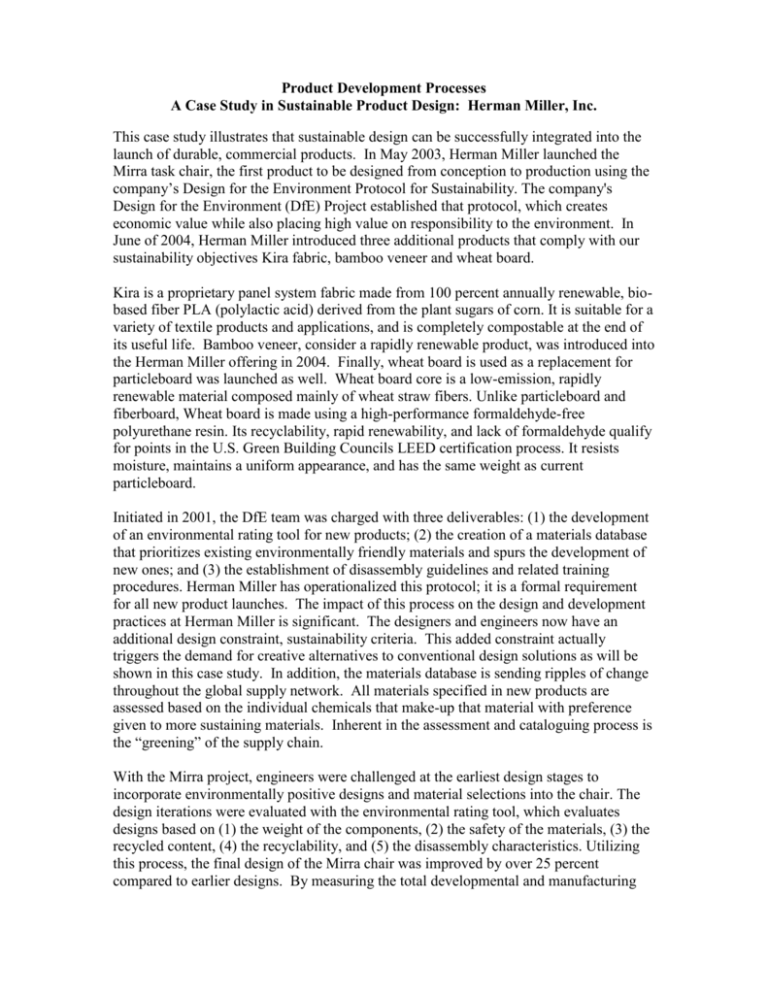
Product Development Processes A Case Study in Sustainable Product Design: Herman Miller, Inc. This case study illustrates that sustainable design can be successfully integrated into the launch of durable, commercial products. In May 2003, Herman Miller launched the Mirra task chair, the first product to be designed from conception to production using the company’s Design for the Environment Protocol for Sustainability. The company's Design for the Environment (DfE) Project established that protocol, which creates economic value while also placing high value on responsibility to the environment. In June of 2004, Herman Miller introduced three additional products that comply with our sustainability objectives Kira fabric, bamboo veneer and wheat board. Kira is a proprietary panel system fabric made from 100 percent annually renewable, biobased fiber PLA (polylactic acid) derived from the plant sugars of corn. It is suitable for a variety of textile products and applications, and is completely compostable at the end of its useful life. Bamboo veneer, consider a rapidly renewable product, was introduced into the Herman Miller offering in 2004. Finally, wheat board is used as a replacement for particleboard was launched as well. Wheat board core is a low-emission, rapidly renewable material composed mainly of wheat straw fibers. Unlike particleboard and fiberboard, Wheat board is made using a high-performance formaldehyde-free polyurethane resin. Its recyclability, rapid renewability, and lack of formaldehyde qualify for points in the U.S. Green Building Councils LEED certification process. It resists moisture, maintains a uniform appearance, and has the same weight as current particleboard. Initiated in 2001, the DfE team was charged with three deliverables: (1) the development of an environmental rating tool for new products; (2) the creation of a materials database that prioritizes existing environmentally friendly materials and spurs the development of new ones; and (3) the establishment of disassembly guidelines and related training procedures. Herman Miller has operationalized this protocol; it is a formal requirement for all new product launches. The impact of this process on the design and development practices at Herman Miller is significant. The designers and engineers now have an additional design constraint, sustainability criteria. This added constraint actually triggers the demand for creative alternatives to conventional design solutions as will be shown in this case study. In addition, the materials database is sending ripples of change throughout the global supply network. All materials specified in new products are assessed based on the individual chemicals that make-up that material with preference given to more sustaining materials. Inherent in the assessment and cataloguing process is the “greening” of the supply chain. With the Mirra project, engineers were challenged at the earliest design stages to incorporate environmentally positive designs and material selections into the chair. The design iterations were evaluated with the environmental rating tool, which evaluates designs based on (1) the weight of the components, (2) the safety of the materials, (3) the recycled content, (4) the recyclability, and (5) the disassembly characteristics. Utilizing this process, the final design of the Mirra chair was improved by over 25 percent compared to earlier designs. By measuring the total developmental and manufacturing costs of this new task chair, the economic ramifications of incorporating sustainable design attributes are shown to be no worse than cost-neutral. The DfE Team works closely with McDonough Braungart Design Chemistry (MBDC), a design firm dedicated to revolutionizing the design of products and services worldwide. MBDC was founded in 1995 to promote and shape what it calls the "Next Industrial Revolution" through the implementation of its Cradle-to-Cradle Design Protocol.

